Edible flowers!
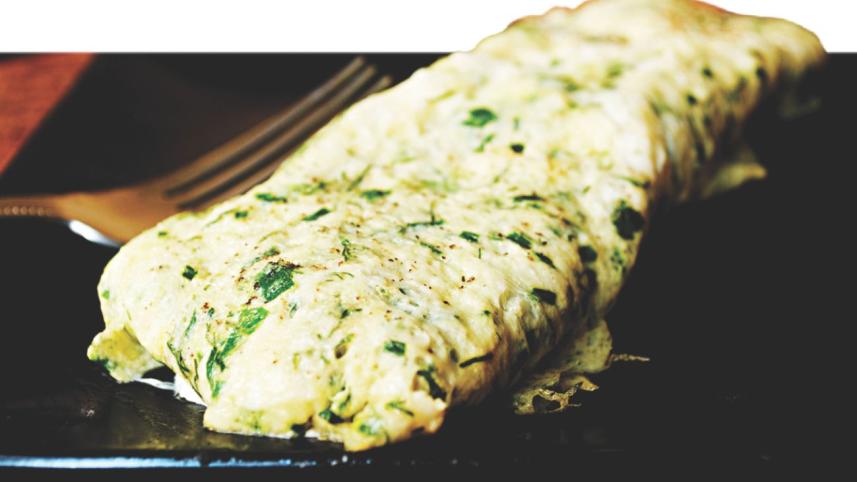
Yes, flowers can be eaten! They can also be candied, frozen into ice, made into rings, jams and jellies. Flowers are part of many regional cuisines, including Asia, Europe, and the Middle East.
The culinary use of flowers dates back thousands of years with the first recorded mention being in 140 B.C. Many different cultures have incorporated flowers into their traditional food. Oriental dishes make use of daylily duds and the Romans used mallow, rose and violets. Italian and Hispanic cultures gave us stuffed squash blossoms and Asian Indians use rose petals in many recipes.
With their powerful and unique flavours, textures and colours, edible flowers have gained popularity as a creative and innovative ingredient for the culinary world. Flowers are added to food to provide taste, aroma, and colour. They can be part of a main dish, a salad, or a dessert.
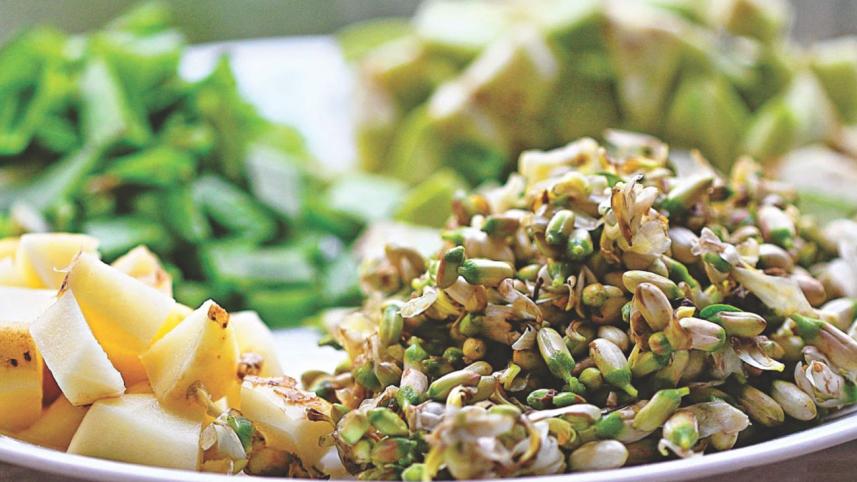
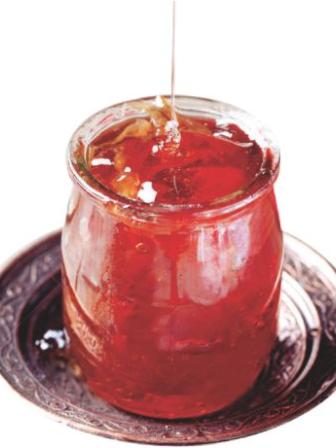
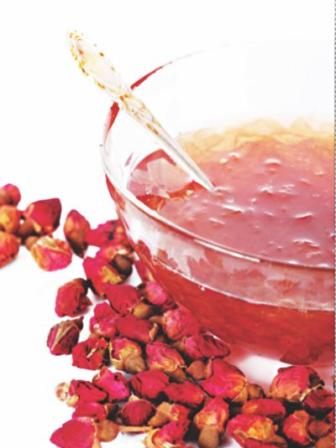
Flowers can also be incorporated into beverage as flavourings, or used to make tea. Some are dried and used as medicinal or culinary herbs.
MUSTARD FLOWER OMELETTE
The fluffy omelette is a refined version of an ancient food. The French word omelette came into use during the mid- sixteenth century. In cuisine, an omelette is a dish made from beaten eggs, quickly cooked with butter or oil in a frying pan.
Omelette are tasty and super-quick to knock together. A simple omelette is delicious and brilliant for breakfast, lunch or dinner. Once you have perfected this method, you can go on to add different ingredients to your simple omelette and make lots of lovely combinations.
Ingredients
½ cup mustard flower
3 large eggs
1 tbsp chopped onion
¼ tsp chopped garlic
1 tsp chopped green chilli
1 tbsp butter
Salt to taste
Method
Crack the eggs into a mixing bowl. Mix all the ingredients. Beat well with a fork. Put a frying pan on low heat and add one tbsp butter. When the butter is melted, add eggs and move the pan around to spread them out evenly. When the omelette begins to cook and firm up but still has a little raw egg on top, ease around the edge of the omelette with a spatula, then fold it in half. When it turns golden brown remove the pan from the heat and side the omelette on to a plate.
ROSE PETAL JAM
Most roses are edible. They can be used to add a delicious and exotic taste to all types of dishes. The flavour of roses is distinct and immediately recognisable, and it looks as wonderful as it taste.
Ingredients:
1 cup red or pink or white rose petals
2 cup sugar
4½ cups water
Juice of 2 lemons, pips or seeds remove
Method:
Select rose petals of any colour. The shade of the petals will be the colour of the jam. Wash them and then cut off the white bottom of each petal. Before eating them or using them in cooking, they should be washed well to avoid any chemicals that they might have been sprayed with.
Soak the petals in water for half an hour. Place the rose petals into a bowl and sprinkle the sugar over them to make sure that each petal is coated. Bruise them well with your fingers and cover the bowl with a plastic film. Allow it to remain overnight in a cool spot that is not too dry and not too humid.
Get a saucepan and pour in remaining sugar, water and lemon juice. Dissolve contents over a low heat. Stir the rose petals into the mixture and allow to simmer, 20 minutes. Bring to a boil and continue to boil for 5 minutes until the mixture thickens, or until a spoonful dropped onto cold plate jells and hold its shape. Pour it into a clean, warmed jar and add the cover and a label. Store it in a cool place.
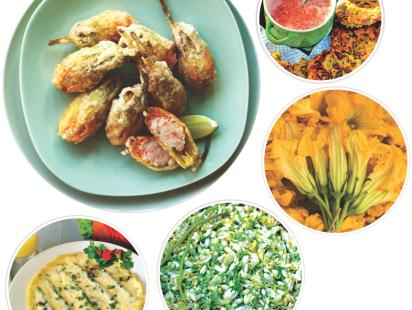
PUMPKIN FLOWERS STUFFED WITH PRAWN
Ingredients:
12 pumpkin flowers, stems intact with stamen removed
200g prawns, shelled and deveined
2 egg whites
1 cup potato starch
1 tbsp fish sauce
1 garlic clove, finely diced
1 lime
Vegetable oil for deep frying
Pinch salt and pepper
Method:
Pound the prawns in a mortar and pestle into a fine paste. Add the fish sauce, garlic, salt and pepper, knead well for 2 minutes. Take a teaspoon of paste and carefully stuff each pumpkin flower. Coat each flower with egg white then dust each flower with potato starch until dry and shake the excess starch off. In a deep saucepan or wok add the oil and bring to 180 degrees Celsius.
Fry the flowers until crisp, not allowing them to go brown and place on absorbent pepper towel. Place the flowers on a long platter and garnish. Serve as a shared entree with a squeeze of lime.
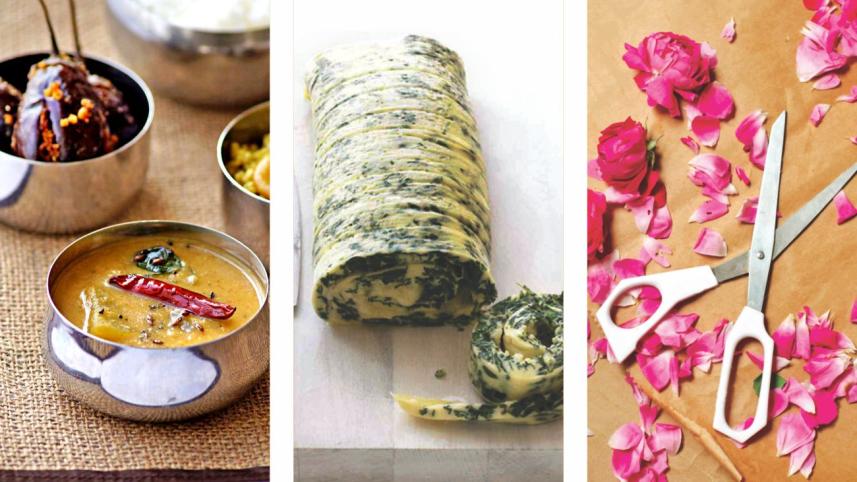
PLANTAIN SAMBAR
This sambar recipe is one of the most loved dishes in South Indian cuisine. It accompanies most every meal. In south India , there are variations to this sambar recipe, but this is the one I use.
Ingredients:
1 plantain
½ cup mashkolai daal
½ tsp turmeric powder
1 tbsp tamarind
2 tbsp somber powder
Salt to taste
For paste -
2 tbsp coconut
2 tbsp coriander seeds
½ tsp chickpeas
A pinch asafetida powder
1 tsp red chillies powder
¼ tsp orhar daal
For seasoning -
1 tbsp oil
¼ tsp mustard seeds
¼ tsp fenugreek seeds
A pinch asafetida powder
Few curry leaves
Method:
In a pan cook mashkalai daal with a pinch of turmeric powder and water. Keep it aside. Soak tamarind in two cups of water and extract juice from it and keep aside. Heat oil in a pan and fry the ingredients of paste till they turn golden brown and grind it into a fine paste. Remove the skin from plantain and cut it into medium sized cubes.
Now take a pan, put the plantain pieces, add the tamarind juice, turmeric powder, sambar powder and cook. Stir the ingredients occasionally. When the plantain is 3/4 done, add the grounded paste and add water.
Now add the cooked mashkalai daal to it and mix well. Cook for 10 minutes in low heat. In a separate pan, heat oil in a pan, splutter mustered seeds, fenugreek seeds, curry leaves and asafetida powder and sauté for 2 minutes, add this mixture to the daal. Mix well and allow it to boil for 5 minutes. Now sambar is ready to serve.
DRUMSTICK FLOWER PAKORA
Drumstick flowers (shojne phool) are small, round and white in colour. They are edible when cooked and tastes like mushrooms. Select the flowers that are fresh and unwilled. Check for any dark spots and bruises. They should be whole and not broken. Drumstick flowers are added to vegetable dishes, cutlets, chutneys and they are also added to daal and sambar.
Ingredients:
3 cup drumstick flowers
2 tbsp Bengal gram, flour
½ tsp red chilli powder
½ tsp coriander seed roasted and powdered
1 cup coconut, scraped
¼ tsp turmeric powder
2 tbsp rice flour
2 medium onions
½ tsp tamarind pulp
Salt to taste
Oil for deep frying
Method:
Wash the flowers. Cut the onions and mix all the ingredients well except oil and rice flour. Mix and separate into 10 portions. Make round ball and flatten them. Roll in rice flour on both sides. Heat up frying pan and put oil on it. Fry the pakoras over low heat until brown and crisp. Serve immediately.
Photo: Collected



 For all latest news, follow The Daily Star's Google News channel.
For all latest news, follow The Daily Star's Google News channel.
Comments